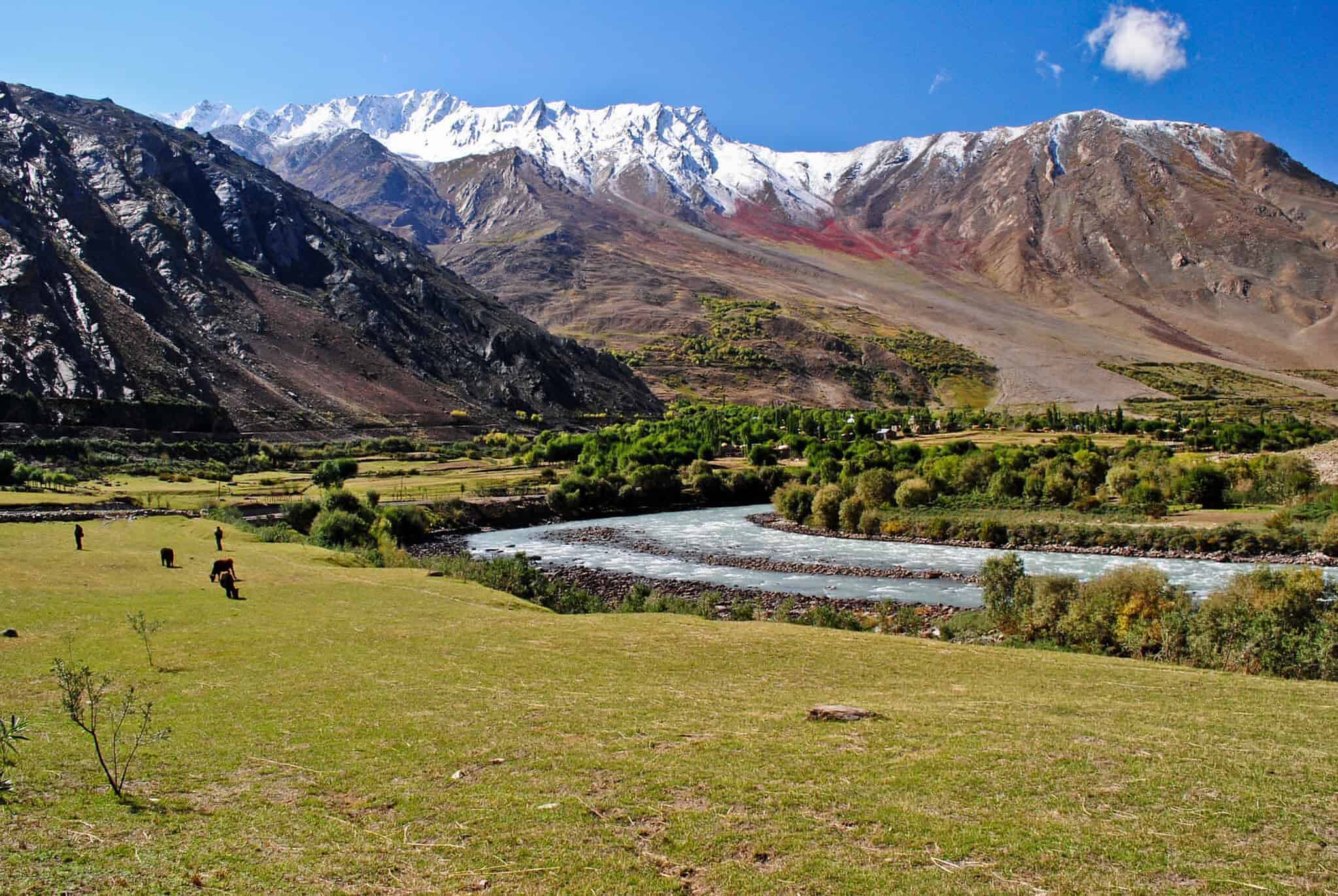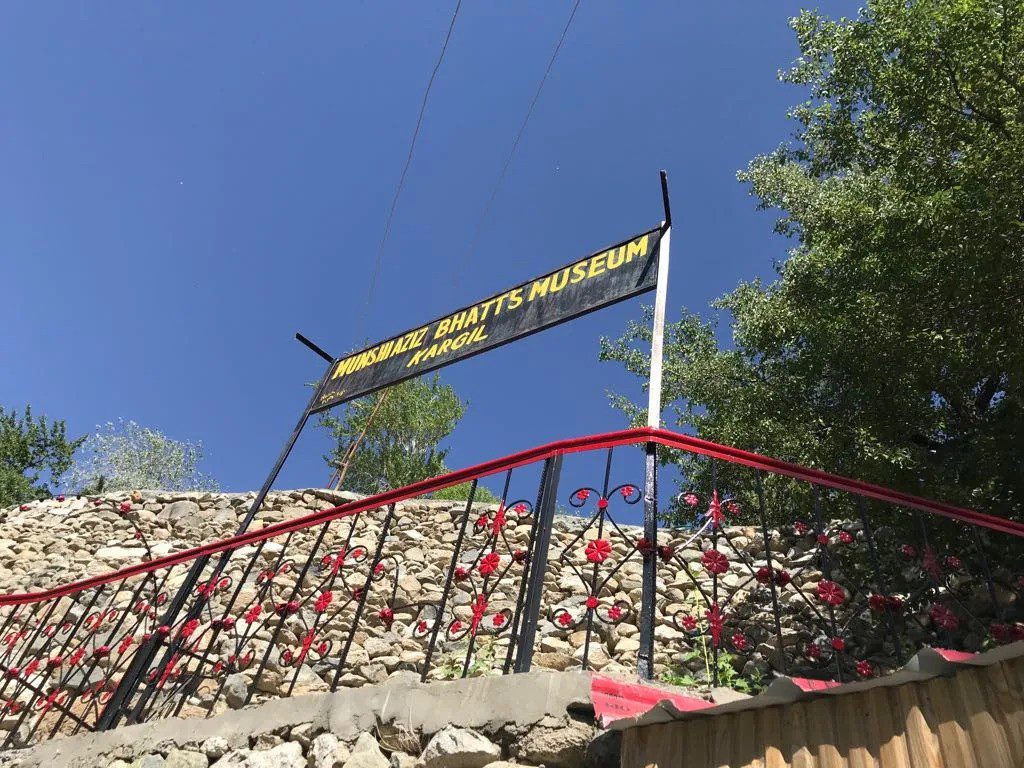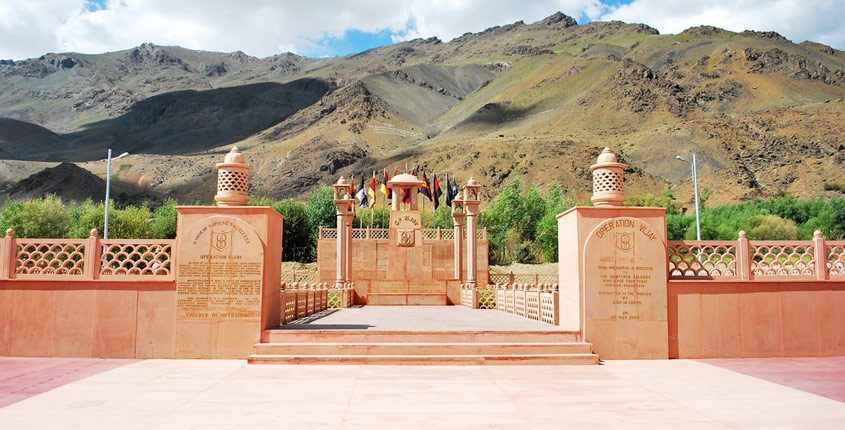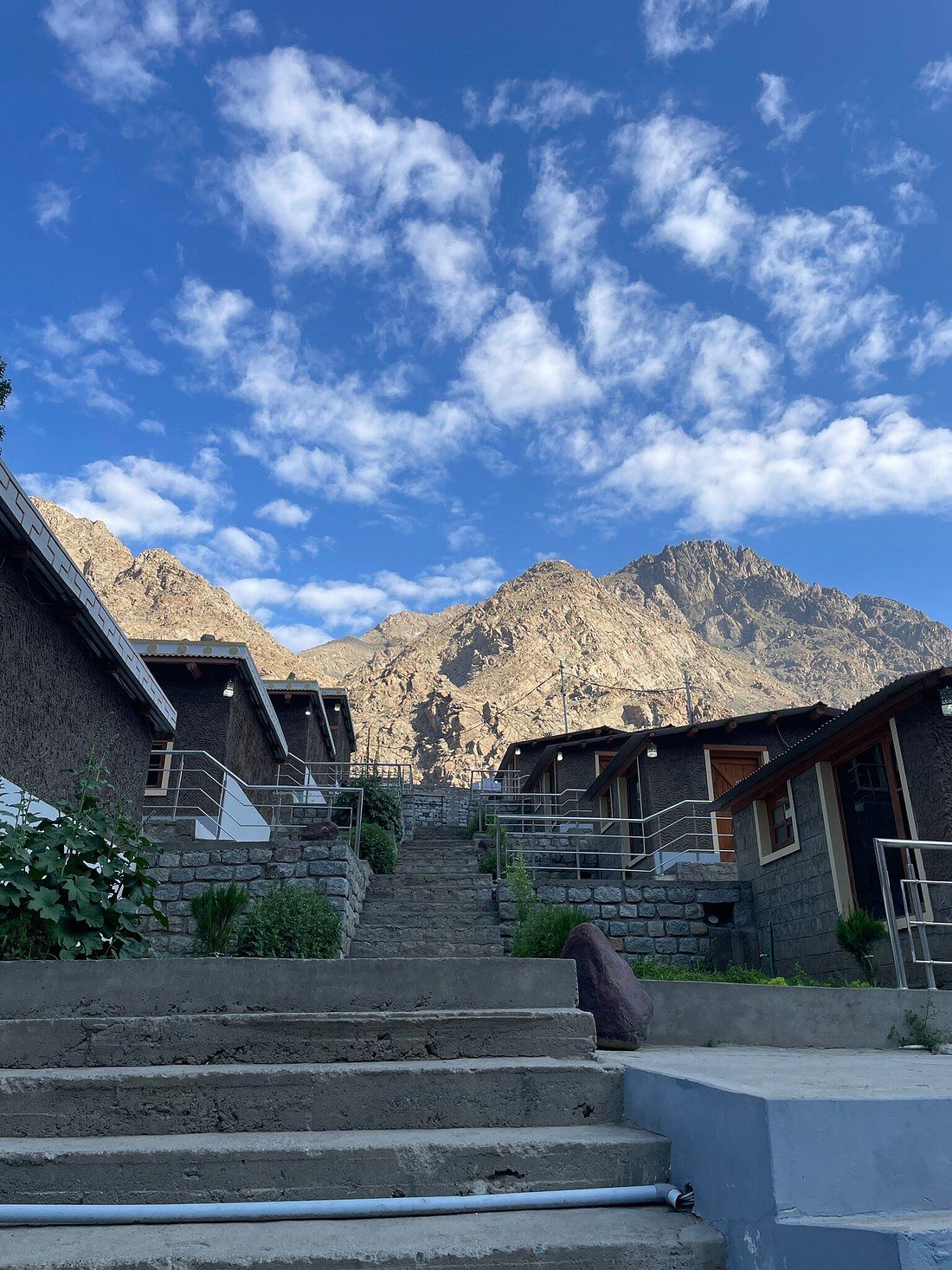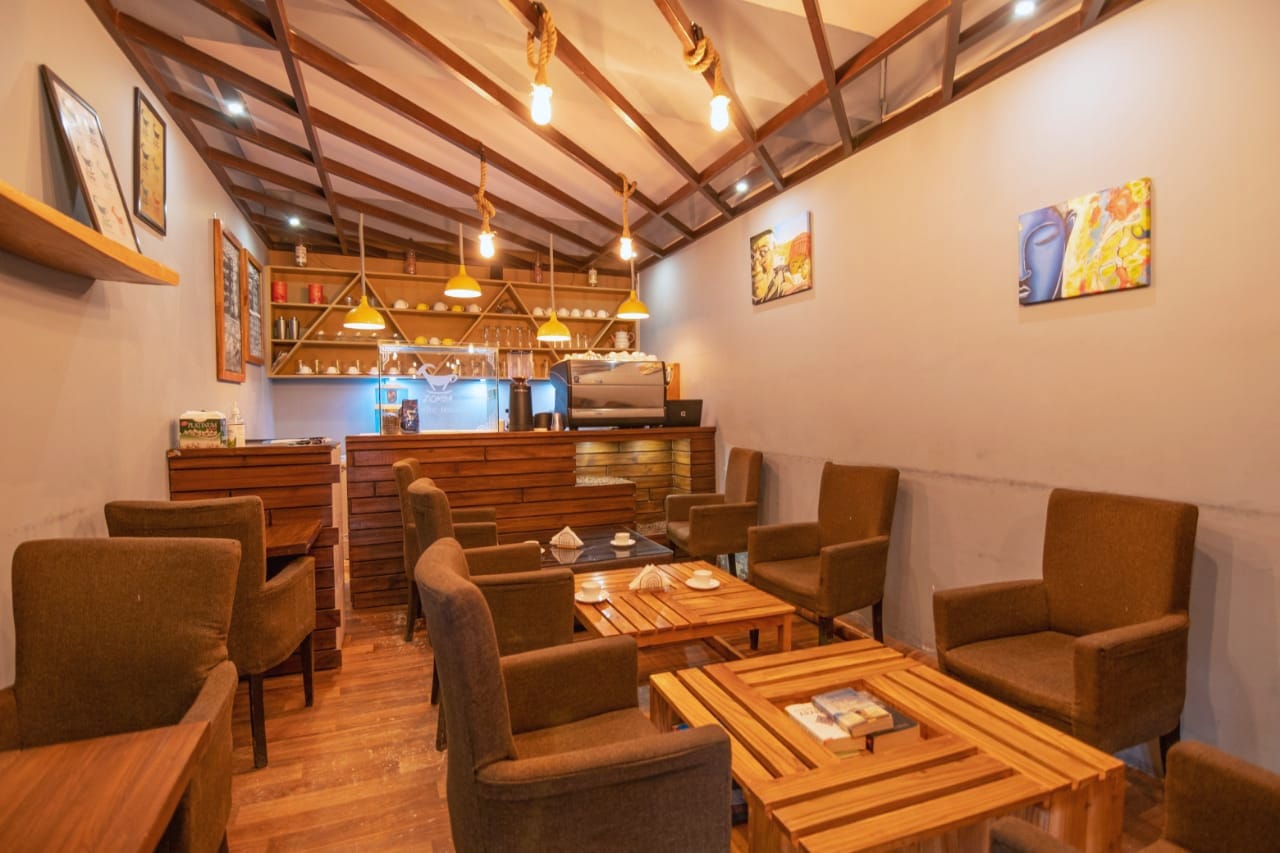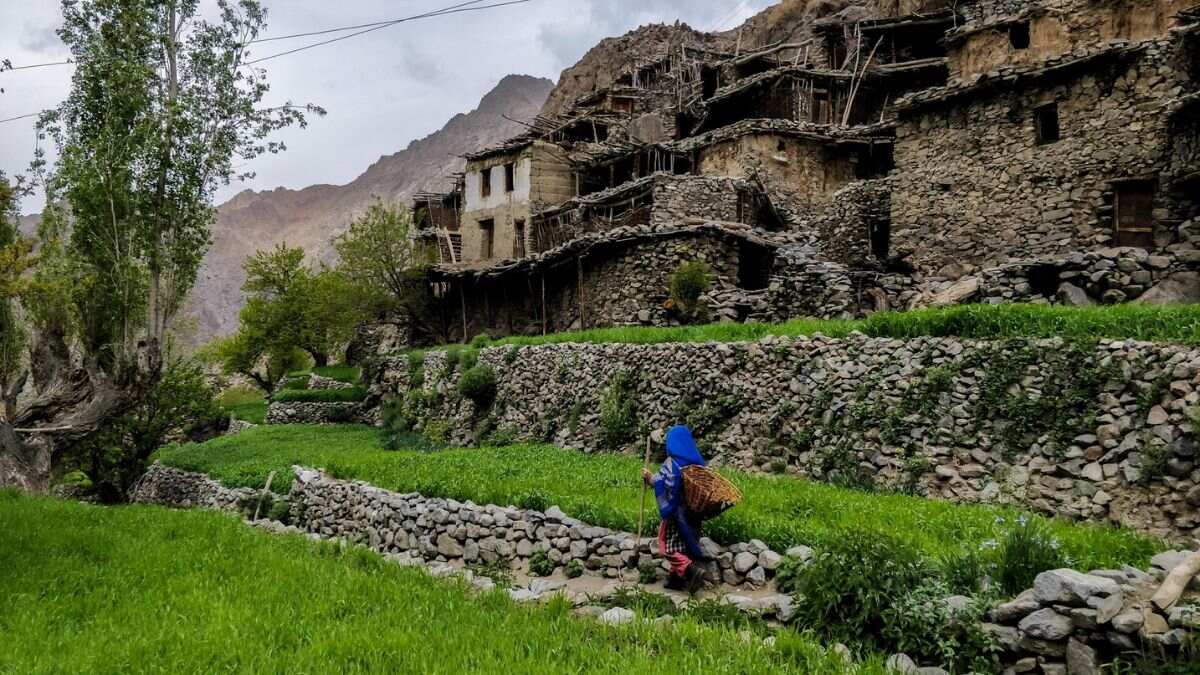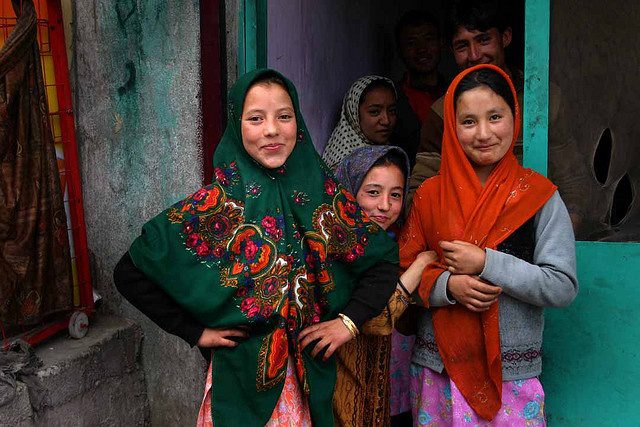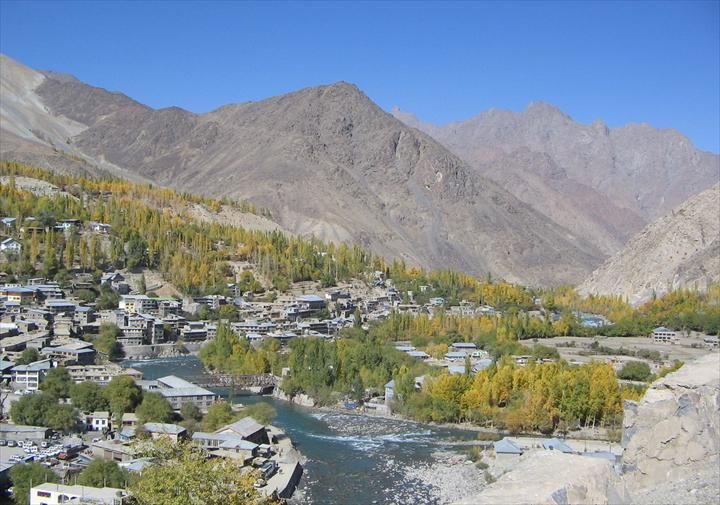Nestled in the heart of Ladakh, Kargil is more than just a name etched in history. This charming town, located on the banks of the Suru River, offers a unique blend of breathtaking landscapes, rich cultural heritage, and unforgettable experiences. Whether you’re a history enthusiast, nature lover, or adventure seeker, Kargil has something for everyone. This guide will cover the top attractions, best accommodations, must-visit dining spots, local bazaars, and travel tips to make your trip seamless and memorable.
Why Visit Kargil?
Cultural Significance and Historical Importance
Kargil is steeped in history, serving as a key trade and cultural hub for centuries. Its blend of Tibetan and Balti traditions offers a fascinating glimpse into the unique lifestyle of Ladakh. The town also holds significant importance as the site of the historic Kargil War Memorial, a tribute to India’s brave soldiers.
Gateway to Adventure in Ladakh
Positioned strategically, Kargil serves as the perfect base for exploring Ladakh’s most beautiful regions, including Zanskar Valley and Suru Valley. It’s also a crucial stop on the popular Leh-Srinagar Highway, offering ample opportunities for trekking, camping, and cultural exploration.

Top Attractions in Kargil
Kargil Museum: A Peek into History
The Kargil Museum, also known as the Kargil Heritage Museum, is a treasure trove of artifacts, photographs, and memorabilia. It tells the story of Kargil’s history, from its ancient trade routes to its modern significance. Visitors often praise its collection for providing an intimate look into the region’s heritage.

Kargil City Viewpoint: Stunning Panoramas
Located on the outskirts of the city, the Kargil City Viewpoint offers mesmerizing vistas of the town and the surrounding Himalayan landscape. It’s the perfect spot for photographers and nature lovers to soak in the beauty of Ladakh.
Drass War Memorial: A Tribute to Heroes
Situated just 60 km from Kargil, the Drass War Memorial is a must-visit for those interested in the region’s military history. Built to commemorate the martyrs of the Kargil War, the memorial is a poignant reminder of courage and sacrifice.

Where to Stay in Kargil
Hotels and Guesthouses for Every Budget
From luxurious hotels to cozy guesthouses, Kargil offers a variety of accommodations. Some popular options include:
| Name |
Type |
Features |
Price Range |
| The Highland Mountain Resort |
Hotel |
Luxurious rooms, great views |
$80–$120 per night |
| Barula Guest House |
Guesthouse |
Family-friendly, central location |
$20–$40 per night |
| Hotel Siachen |
Mid-range Hotel |
Modern amenities, on-site dining |
$50–$70 per night |
Eco-Resorts in Kargil: A Sustainable Stay
For an eco-friendly and unique experience, consider staying at one of Kargil’s eco-resorts. These resorts combine comfort with sustainable practices, making them perfect for environmentally conscious travelers. The Suru Valley Eco Resort, for example, offers stunning views and locally sourced meals.

Tips for Choosing Accommodation in Kargil
- Location Matters: Choose accommodations near the attractions you wish to visit.
- Book Early: Kargil can get crowded during peak seasons, so book your stay in advance.
- Ask for Recommendations: Many local guesthouses provide insider tips on exploring the area.
Where to Eat in Kargil
Top Restaurants Serving Balti Cuisine
Balti cuisine is a highlight of Kargil, and no trip is complete without tasting Momos, Thukpa, and Skew (Barley stew). Some popular restaurants include:

- Zomsa Restaurant: Known for its authentic Ladakhi dishes.
Must-Visit Cafes in Kargil
For a laid-back experience, check out these cafes:

- Roots Café: Famous for its coffee and freshly baked goods.
Exploring Local Food Markets
The Kargil Bazaar is the best place to try street food like Apricot Dumplings and to shop for fresh local produce.
Shopping in Kargil
Balti Bazaar: Traditional Crafts and Souvenirs
Balti Bazaar is a haven for traditional Ladakhi crafts, including handwoven carpets, Pashmina shawls, and antique jewelry. Don’t forget to grab some handmade pottery or wooden artifacts as souvenirs.
Kargil Bazaar: A Blend of Old and New
This bustling marketplace offers a mix of modern goods and traditional products. Visitors can shop for everything from organic apricots to Tibetan prayer flags.
Tips for Bargaining in Kargil Markets
- Be polite but firm: when negotiating prices.
- Shop around: for the best deals before making a purchase.
Adventure Activities Around Kargil
Trekking Trails Starting from Kargil
Kargil is the gateway to some of Ladakh’s most picturesque trekking routes. Popular options include the Nun Kun Trek and Suru Valley Trek.
Camping in Scenic Valleys
Set up camp in Suru Valley or near the Zanskar River for an unforgettable experience under the stars.
Exploring Nearby Villages and Monasteries

Discover the serenity of villages like Hunderman, known for its heritage museum, or visit monasteries like Mulbekh Monastery for spiritual enrichment.
Travel Tips for Visiting Kargil
Best Time to Visit Kargil
Summer (May–September): Ideal for sightseeing and outdoor activities.
Winter (October–April): Best for experiencing snowfall and serene landscapes.
Transportation and Accessibility
Kargil is well-connected by road. You can reach it via the Leh-Srinagar Highway or take a private cab from Leh. For a budget option, consider state-run buses.

Staying Safe and Respecting Local Culture
- Acclimatize: Allow time to adjust to the altitude to avoid AMS (Acute Mountain Sickness).
- Dress Modestly: Respect the local customs by wearing conservative clothing.
- Engage Respectfully: Always ask for permission before taking photos of locals.
Testimonials
“Kargil exceeded my expectations with its stunning landscapes and warm hospitality. Staying at an eco-resort was the highlight of my trip. Highly recommend this hidden gem in Ladakh!”
– Emily Carter, United Kingdom, Travel Blogger
“The blend of history and adventure in Kargil is unparalleled. Shopping at Balti Bazaar and dining on traditional Balti food made my experience unforgettable.”
– Ryan Thompson, USA, Architect
FAQs
- What are the must-visit attractions in Kargil?
The Kargil Museum, Kargil City Viewpoint, and Balti Bazaar.
- Where can I find eco-friendly stays in Kargil?
Suru Valley Eco Resort and similar accommodations focus on sustainability.
- What is the best time to visit Kargil?
May to September is ideal for outdoor activities and sightseeing.
- What are the must-try dishes in Kargil?
Momos, Thukpa, and Apricot Dumplings are local favorites.
- How do I reach Kargil?
Kargil is accessible by road via the Leh-Srinagar Highway or private cabs.
Ultimate Travel Guide to Kargil
Ultimate Travel Guide to Kargil | The journey through Ladakh mirrors the very essence of unraveling unknown horizons, as its dramatic landscapes and unique cultural identity awaken the deepest sense of wonder and exploration. Ultimate Travel Guide to Kargil delves into this realm where inner peace intertwines with the wild, untouched beauty of Ladakh. From the snow-capped peaks to the serene monasteries, every step in Ladakh is a step toward self-discovery. The mountains, ancient paths, and unspoken mysteries stretch before travelers, offering a meditative experience where each encounter feels both effortless and transformative. Whether it’s trekking across remote valleys or sitting quietly beside a sacred lake, Ladakh invites those who seek a deeper connection to the natural and spiritual world.

Ultimate Travel Guide to Kargil
The monasteries of Ladakh stand as living monuments to the region’s profound spiritual heritage. With origins dating back over a thousand years, these ancient structures are both places of worship and repositories of art, culture, and wisdom. Hemis Monastery, one of the largest in Ladakh, is renowned for its annual festival, featuring colorful mask dances performed by monks. The history of these monasteries reflects Ladakh’s role as a crossroads between India, Tibet, and Central Asia, where religious and cultural influences have intertwined over the centuries.
The Tibetan Buddhist influence is especially evident in the architecture and daily life of the monks. Prayer wheels, intricate murals, and the soft hum of chants fill the air as visitors explore the monastery grounds. Each monastery, from the remote Lamayuru to the awe-inspiring Thiksey, offers a window into the spiritual heart of Ladakh. These centers of meditation, learning, and community life continue to thrive, preserving traditions that have shaped Ladakh for generations.
Why Visit Ladakh for Ultimate Travel Guide to Kargil?
Ladakh is a destination that transcends mere travel. It offers a journey that touches both the outer and inner landscapes, making it a perfect setting for those who seek to unravel their own unknown horizons. The region’s breathtaking scenery—from towering mountain ranges to hidden valleys—provides not just an escape but a space for contemplation and growth. Ladakh’s culture, deeply rooted in Buddhist practices, invites visitors to reflect on their own lives and the world around them.
Ladakh’s people, known for their warmth and hospitality, add to the richness of the experience. Villages like Sumda Chun and the legendary Nubra Valley introduce travelers to a way of life that is intricately connected to nature and spirituality. Staying in local homestays allows for immersive experiences where one can learn about traditional Ladakhi customs, share meals made from local produce, and participate in community rituals.

Beyond its natural beauty, Ladakh offers a unique opportunity to explore oneself. The vastness of the region’s plateaus and the clarity of its skies seem to mirror the vastness of the human spirit. Whether it’s standing atop a mountain pass at 18,000 feet or meditating in a centuries-old monastery, Ladakh helps unravel the unknown horizons within each traveler.
Finding the Best Ultimate Travel Guide to Kargil in Ladakh
Finding the best places in Ladakh to experience “Ultimate Travel Guide to Kargil” involves venturing off the beaten path. Ladakh’s lesser-known treks, such as those leading to secluded monasteries or high-altitude lakes, offer unparalleled opportunities for solitude and reflection. The Markha Valley trek, for instance, takes travelers through verdant valleys, ancient villages, and high-altitude passes, allowing for both physical and spiritual exploration.
Ladakh’s iconic lakes, including Pangong Tso and Tso Moriri, are ideal spots for quiet contemplation. Their still waters reflect the sky, creating a mesmerizing landscape that feels timeless and infinite. Sitting beside these lakes, especially at dawn or dusk, brings an overwhelming sense of peace and connection with nature.

For those interested in Ladakh’s spiritual heritage, exploring monasteries such as Alchi, Phyang, or Diskit can be a transformative experience. These sites are not just places of worship but also centers of art, philosophy, and wisdom. Visiting these monasteries, with their ancient murals and intricate statues, offers insight into Ladakh’s rich cultural tapestry.
Ladakh’s Atmosphere and Ultimate Travel Guide to Kargil
Ladakh’s atmosphere is unlike any other place on Earth. The stark contrasts between the rugged mountains and the serene, tranquil monasteries create an environment that feels both raw and sacred. The traditional decor in Ladakhi homes and religious sites reflects this balance, with mud-brick houses adorned with prayer flags and colorful thangkas (Buddhist paintings) that add warmth and spiritual meaning to the space.

The interiors of Ladakhi homes, often simple and functional, are filled with symbols of devotion. Small shrines dedicated to Buddhist deities are common, and the air is often fragrant with incense. The use of earthy materials, like stone and wood, along with brightly colored textiles, creates an inviting and peaceful space, perfect for relaxation and reflection.
Traditional Ultimate Travel Guide to Kargil
Traditional Ultimate Travel Guide to Kargil is an integral part of the region’s identity, offering a unique blend of flavors that reflect its harsh climate and remote location. Hearty, warming dishes such as thukpa (noodle soup) and momos (dumplings) provide the sustenance needed to endure Ladakh’s cold temperatures. Skyu, a thick stew made with root vegetables and barley, is another staple of the Ladakhi diet, designed to nourish both body and spirit.

Drinks like butter tea, made with yak butter and salt, are a must-try for anyone visiting Ladakh. This rich, savory drink is not only warming but also hydrating, making it essential for those venturing into the high-altitude regions of Ladakh. Chang, a local barley beer, is often enjoyed during festivals and community gatherings, adding a sense of joy and camaraderie to any occasion.
Live Cultural Ultimate Travel Guide to Kargil in Ladakh
Ladakh is home to a vibrant cultural scene, with festivals and live performances held throughout the year. The Hemis Festival, which celebrates the birth of Guru Padmasambhava, is one of the largest and most famous events in the region. Monks dressed in elaborate costumes perform cham dances, which depict the triumph of good over evil. The energy of the festival, with its bright colors, rhythmic music, and elaborate rituals, draws visitors from around the world.
Other local festivals, such as the Losar (New Year) and Ladakh Festival, provide visitors with the chance to witness traditional dance, music, and crafts that have been passed down through generations. These events are more than just entertainment; they are a celebration of Ladakh’s rich cultural heritage and its deep connection to the spiritual world.
Trekking and Outdoor Activities Ultimate Travel Guide to Kargil
Ladakh is a trekker’s paradise, offering some of the most stunning and challenging routes in the world. From the famous Ultimate Travel Guide to Kargil, which follows the frozen Zanskar River, to lesser-known routes like the Sham Valley or Nubra Valley treks, Ladakh’s landscape offers endless possibilities for adventure and discovery. The high-altitude passes, such as Khardung La and Chang La, offer breathtaking views of snow-capped peaks and sprawling valleys.

Wildlife enthusiasts will also find Ultimate Travel Guide to Kargil to be a haven for rare species such as the snow leopard, Himalayan blue sheep, and the Tibetan wild ass. Winter expeditions to spot the elusive snow leopard in the Hemis National Park are gaining popularity among wildlife photographers and conservationists alike.
The Importance of Preserving Ladakh’s Ultimate Travel Guide to Kargil
Ladakh’s rich cultural and environmental Ultimate Travel Guide to Kargil is under increasing threat from climate change and mass tourism. Preserving this unique region requires careful attention to sustainable tourism practices. Choosing eco-friendly accommodations, supporting local businesses, and participating in community-led conservation efforts are just a few ways that visitors can contribute to the preservation of Ladakh’s natural and cultural heritage.
Ladakh’s people have a long history of living in harmony with their environment, practicing sustainable agriculture, and maintaining a deep spiritual connection to the land. Visitors are encouraged to follow the same principles, leaving no trace and respecting the fragile ecosystems that make Ladakh so special.
Etiquette and Tips for Visiting Ultimate Travel Guide to Kargil
Before visiting Ladakh, it’s essential to understand and respect the region’s customs and traditions. As a deeply spiritual place, Ladakh requires visitors to dress modestly, especially when visiting monasteries or attending religious ceremonies. Always ask for permission before taking photographs inside monasteries or of local people.
Medical Ultimate Travel Guide to Kargil
Spa trail Ultimate Travel Guide to Kargil
Ultimate Travel Guide to Kargil

When Ultimate Travel Guide to Kargil, remember to stay on designated paths to avoid damaging fragile ecosystems. Tipping is appreciated but not expected in most settings, and it’s important to carry cash, as many remote areas do not accept credit cards. Lastly, be mindful of altitude sickness and take the necessary precautions when traveling to higher elevations.
Conclusion: Enjoying Ultimate Travel Guide to Kargil in Ladakh
Ladakh is a place where the physical and spiritual worlds converge, offering travelers a journey unlike any other. Whether you’re trekking across high-altitude deserts, exploring ancient monasteries, or simply sitting in quiet reflection by a mountain lake, Ladakh invites you to unravel your own unknown horizons. By respecting the region’s traditions and practicing sustainable tourism, you help ensure that Ladakh’s beauty and cultural richness will be preserved for future generations to explore and enjoy.
